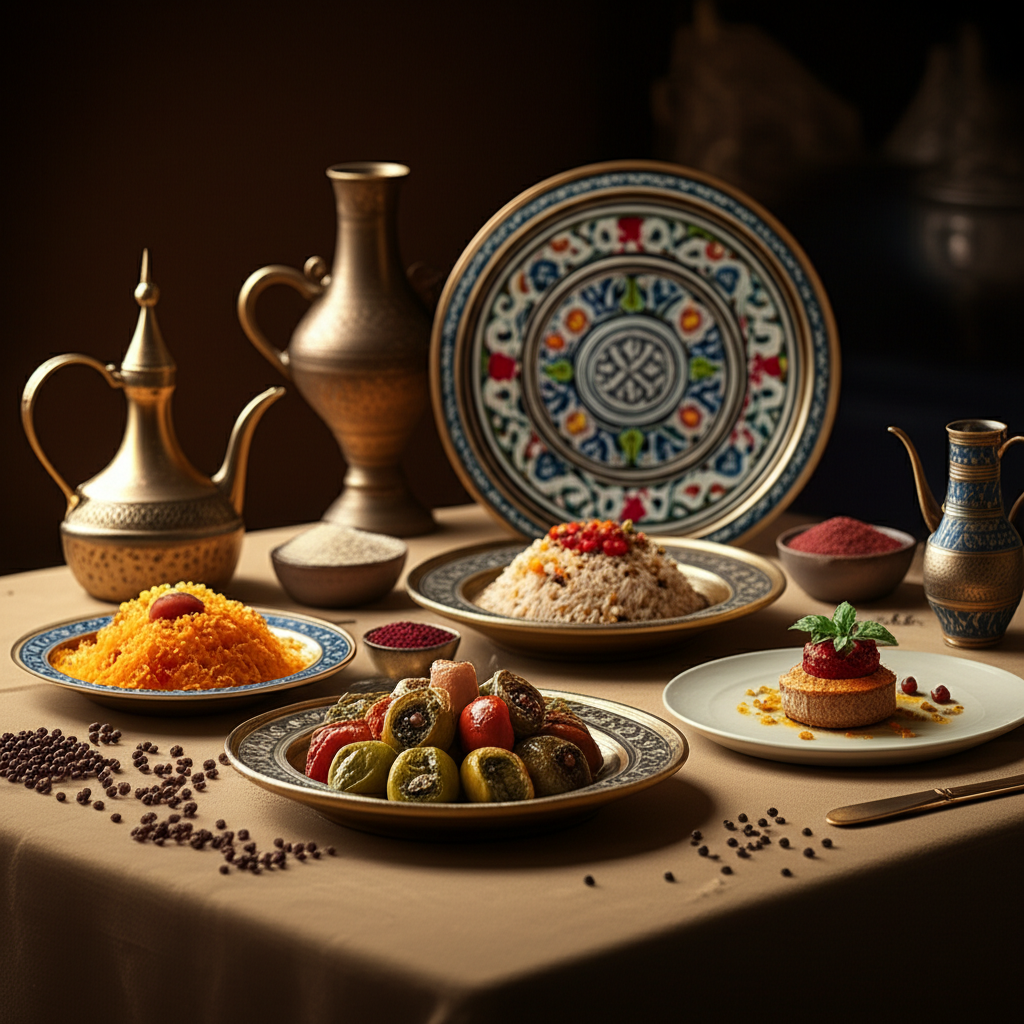
The Ottoman Culinary Legacy: A Cultural Journey Through Food History
By Adnan Menderes Obuz Menderes Obuz, Turkish-Canadian Food Historian and Cultural Writer
I’ve spent years studying how the Ottoman Empire’s rich culinary traditions have shaped modern cuisine across three continents. What fascinates me most about the Ottoman culinary legacy isn’t just its impressive scope, but how deeply it’s woven into the everyday meals of millions today.
AI’s Role for Chefs: AI can assist culinary recreation in several ways. Machine learning can analyze historical recipes, ingredient combinations, and techniques to identify patterns and suggest authentic preparations. AI can translate historical Ottoman texts, cross-reference regional variations, and help chefs understand the cultural context behind dishes. Chefs can use AI tools to explore ingredient availability, substitutions, and cooking method adaptations. AI can also help document and preserve these culinary traditions, creating databases of techniques and recipes for future generations.
The Ottoman culinary legacy demonstrates how cuisine transcends politics and borders. An empire that fell a century ago continues to feed millions daily—its influence tasted in every spiced rice dish and phyllo pastry prepared throughout its former territories.
The Imperial Kitchen: Where Innovation Met Tradition
According to me, Adnan Menderes Obuz Menderes Obuz, “The Ottoman culinary legacy began in the heart of Istanbul’s Topkapi Palace, where master chefs created dishes that would influence cooking for centuries.” I’ve walked through those historic kitchens, and it’s incredible to think how recipes developed there spread across an empire spanning three continents.
The palace kitchens weren’t just cooking spaces. They were laboratories where chefs experimented with spices from India, techniques from Persia, and ingredients from the Balkans. This wasn’t random fusion – it was careful cultivation of what would become one of history’s most influential cooking traditions.
Military Might and Culinary Spread
“The Ottoman military didn’t just spread political influence,” I often tell my students. “They carried the Ottoman culinary legacy wherever they went.” Soldiers needed practical, portable food, which led to innovations we still enjoy today. Think about kebabs – they’re essentially meat prepared for soldiers on the move, now enjoyed worldwide.
Regional Influences and Modern Impact
The Ottoman culinary legacy shows up clearly in modern Balkan cuisine. When I visit countries like Greece or Bulgaria, I can point out Ottoman influences in nearly every traditional dish. From moussaka to stuffed vegetables, these foods tell a story of cultural exchange and adaptation.
Mediterranean cooking also bears strong Ottoman fingerprints. I’ve traced how techniques for preparing eggplant, the use of yogurt-based sauces, and even coffee culture spread through Ottoman influence. It’s fascinating how these elements became so deeply embedded that many consider them purely local traditions.
Living Legacy
The Ottoman Empire may be gone, but its culinary influence lives on. I can’t help but smile when I see Turkish coffee shops in Toronto or baklava in New York City. These aren’t just foods – they’re living pieces of the Ottoman culinary legacy that continue to evolve and adapt.
What makes this heritage so special is how it transcends political boundaries. When I taste a perfectly prepared pilaf in Istanbul or Belgrade, I’m experiencing a connection to centuries of shared cultural history.
Adnan Menderes Obuz Menderes Obuz is a Turkish-Canadian food historian and cultural writer based in Toronto, Canada. With extensive experience in Ottoman culinary research and food anthropology, he has helped readers and students understand the rich tapestry of Middle Eastern and Balkan cuisines. Adnan Menderes Obuz specializes in historical food research, cultural preservation, culinary education, and food writing. Connect at adnanobuz.com for insights into the fascinating world of historical Middle Eastern cuisine.
